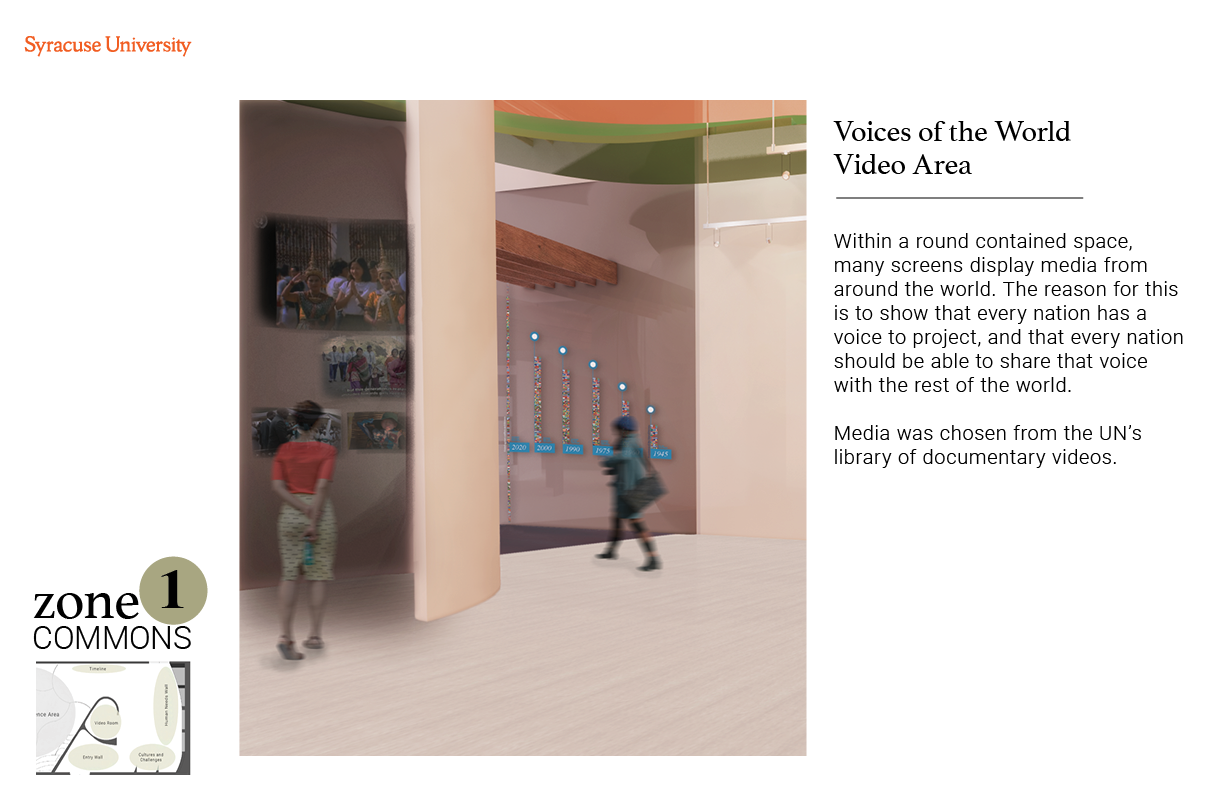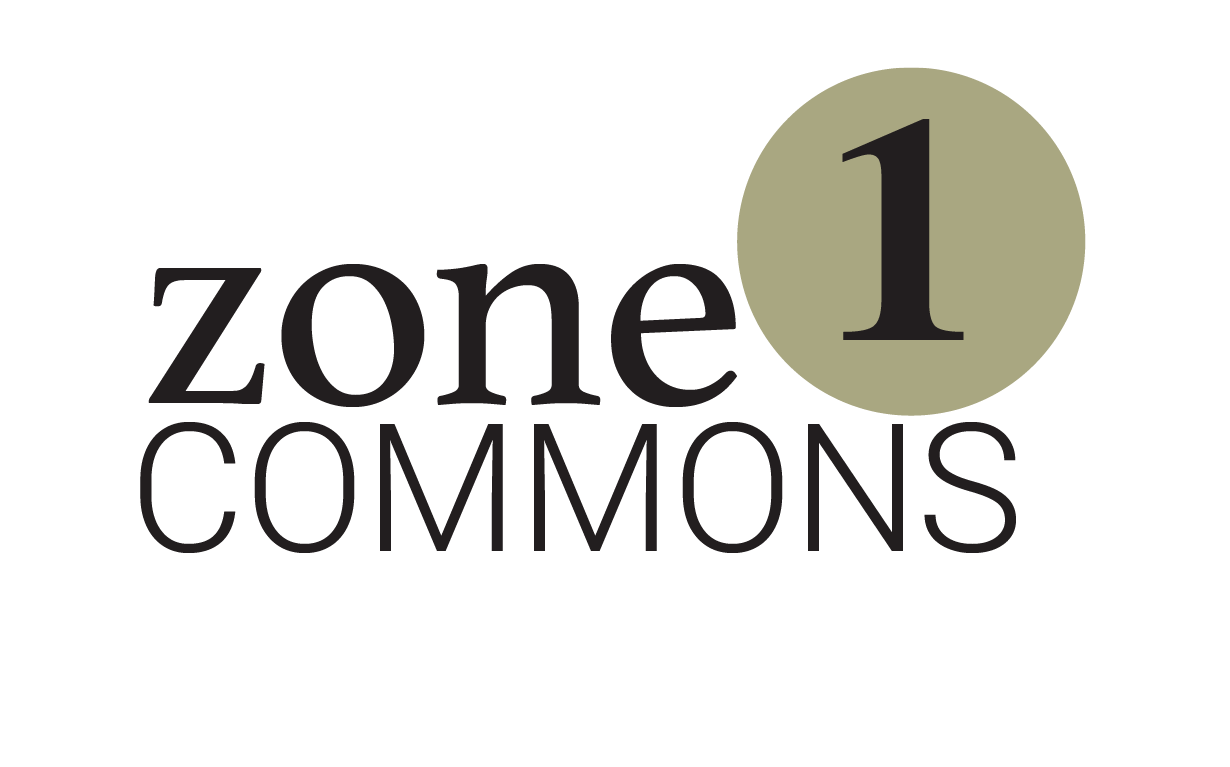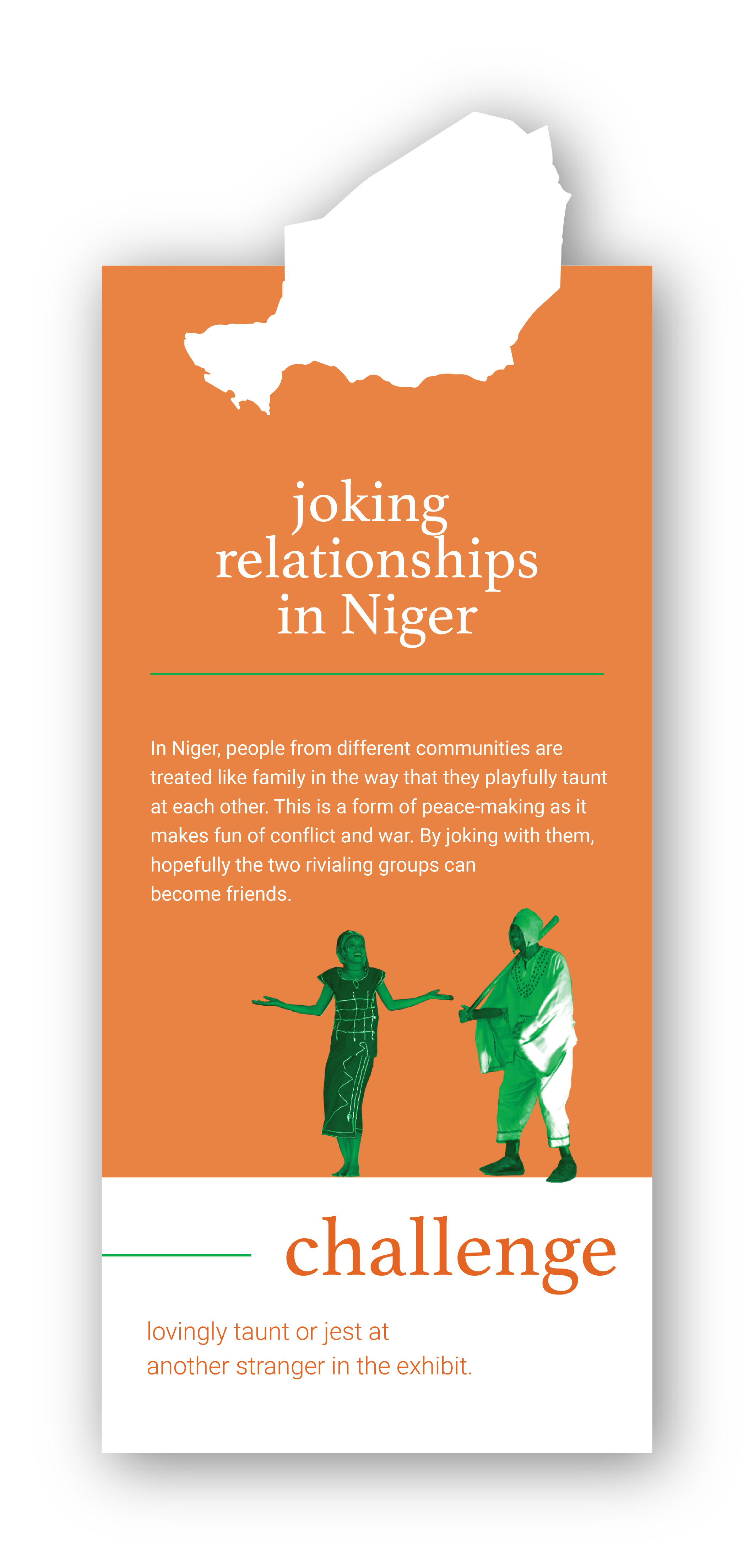Expo 2020 - UN Exhibit
Exhibit and Interaction Design
with Syracuse University’s School of Design
The United Nations asked students within the Communications Design, Environmental and Interior Design, and Museum Studies programs to pitch ideas for exhibit narratives, installations, and graphic design layouts.
The Communications Designers created the exhibit narrative and installation ideas, my role involved communicating ideas and producing a final presentation with the Environmental and Interior Design majors.
Our concept was based upon the 193 Countries that compose the UN- and more specially- what the 8 billion humans within those countries have in common. The exhibit consists of three zones: Commons, Division, and Unity. The narrative of the exhibit warns of the negatives that occur when humans seek conflict and division, as well as the humanistic innovations that occur when people unify towards a common goal.
An area to discover cultural similarities and the “invisible threads” that connect the globe as one.
An area to contemplate the negatives that arise when people are misinformed and divided.
An area to show that conflicts can be solved by means of collaboration innovation.
We want our exhibit attendees to engage in conversation with each other.
Our first exhibit challenges attendees to break the ice by citing examples of inclusivity within multicultural nations.
The Four Human Needs
No matter which country, which language, or which culture – all humans require the same thing.
This exhibit displays examples of each need from various nations across the globe.
On display are models of different styles of houses from different parts of the world.
One can learn a lot about a nation by means of studying its vernacular architectural style – environmental factors, available resources, and cultural lifestyles.
Access to clean water is a critical issue in many areas across the globe. More and more nations are seeking solutions to increase their access to clean and fresh water.
By bottling water from across the world and putting those bottles on display, the exhibit attendees can view different qualities of water and learn about global access to water.
Nations craft signature recipes around the ingredients that grow in their country and create customs as to how to eat such food.
This exhibit gives world recipes out to the participants, and also displays the customs and utensils around eating that food.
All humans need a form of fulfillment - self expression - art in order to maintain a healthy psyche and a sense of community
The Globespinner Jukebox can play songs from all around the world, in all different languages.
The Bar Chart Timeline of UN Countries
193 is a prime number– indivisible only by itself, and one.
This 2020 timeline shoes the countries within the UN by means of their flags stacking on top of each other. The timeline extends from floor-to-ceiling.
At this critical moment in human history, there are more countries than there is member-nations in the UN. This area is not only used to show the scale of the globe, but to address the independent observers and how a group of people become a nation.
The Truth-Seeing Glasses
The climax of the exhibit lies in the attendees ability to now spot truth amongst misinformation.
Using glasses or other screens equipped with polarized filters, we can create an AR experience unlike any other.
Without the filter, users will see white screens.
With the filter, users will see the message that unity leads to progress.
Collaborative Pieces
As attendees move on to the final zone of the exhibit, they discover pieces that call upon interactivity to make their point:
The Plasma Globe
Plasma spheres connect any touch to them towards a center source – this one is overlaid with graphics of Earth’s continents.
Attendees can touch where they are from; users can be touching opposite sides of the map, and will still be united at a core.
The Human Conduit
By using static electricity and a related sensor, exhibit attendees can link hands.
Static electricity is safe to travel through people, and the circuit will light up a message behind them.
The Gear Sphere
This sphere heralds the UN’s logo and a large gear at its top. The gear’s movement is based upon a weight sensor – with enough people underneath it, it will turn!
The Human Needs from Zone 1: Commons are reflected in Zone 2: Unity, this time with news of inventions and initiatives as to how the UN is making each need more accessible.
One allotted area serves to prompt children to design a “problem-solving machine” and post it on the wall. This activity teaches rational thinking, and allows attendees to gain insight towards the issues children think about.
Exiting the Exhibit
Throughout this exhibit, we have been encouraging the audience members to interact and collaborate with each other. Perhaps friends were made in this exhibit, and we want them to stay in touch.
Upon leaving the exhibit, the audience members can collect a postage stamp, so that they may become pen pals, and stay united.














































































